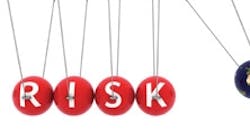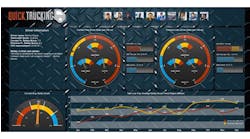The top three sources of risk to a supply chain are information technology, pricing factors and the global economy, according to senior operations executives responding to a survey taken by Accenture. But while most of these executives see supply chain risk management as important to their business, only seven percent said they are generating returns of over 100 percent on their supply chain risk management investments, the Accenture study showed.
Seventy-six percent of companies participating in the “Accenture Global Operations Megatrends Study – Focus on Risk Management,” describe supply chain risk management as important or very important. Of the more than 1000 companies represented across 10 industries, 25 percent plan increased investments of at least 20 percent in supply chain risk management in the next two years.
Those companies that generated returns exceeding 100 percent had three practices in common that distinguished them from others:
Make risk management a priority. Sixty-one percent of the leaders as compared to 37 percent of other companies make risk management a strategic imperative and recognize the importance of capabilities that help them gain greater visibility and predictability across their supply chains.
Centralize their responsibility for risk management. Forty-three percent of leaders versus 32 percent of others had a central risk management function led by an executive in the C-suite or a vice president who oversees all of their risk management activities.
Invest aggressively in risk management with a specific focus on end-to-end supply chain visibility and analytics. Leaders were nearly three times as likely to say they planned to boost their investment in risk management by 20 percent or more in the next two years. Furthermore, nearly 70 percent of leaders said their investments will generate a return of at least 100 percent in the next two years as opposed to 4 percent of others.
“As demonstrated by the leaders in our study, a centralized, top-down approach to supply chain risk management tends to generate the highest ROI on risk management,” said Mark H. Pearson, senior managing director, Accenture Strategy, Operations. “Such a commitment to risk management also can help managers guard against business disruptions in the wake of natural disasters, geo political events, shifts in commodity or shipping prices, or any number of circumstances that can endanger a company’s operations.”
Pearson also noted that such a strong commitment to risk management “can contribute to stakeholder confidence in the fundamentals underpinning a company’s business.”
The areas most frequently exposed to risks in the corporate supply chains are quality (45 percent), planning (39 percent), supply chain skills and talent (38 percent) and sourcing and procurement (37 percent), according to the executives.
“Although unforeseen events or natural disasters lead some to give up on risk management, most risks can be managed to not only minimize the downside but also to gain a competitive advantage as a result of being prepared to respond to circumstances when they arise,” said Pearson. “Scenario planning and robust analytics can play a key role in developing effective risk mitigation strategies.”






